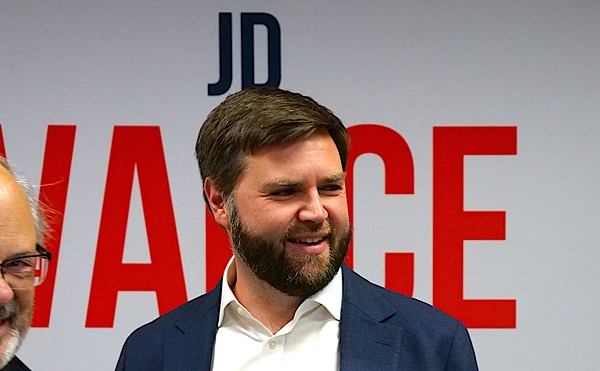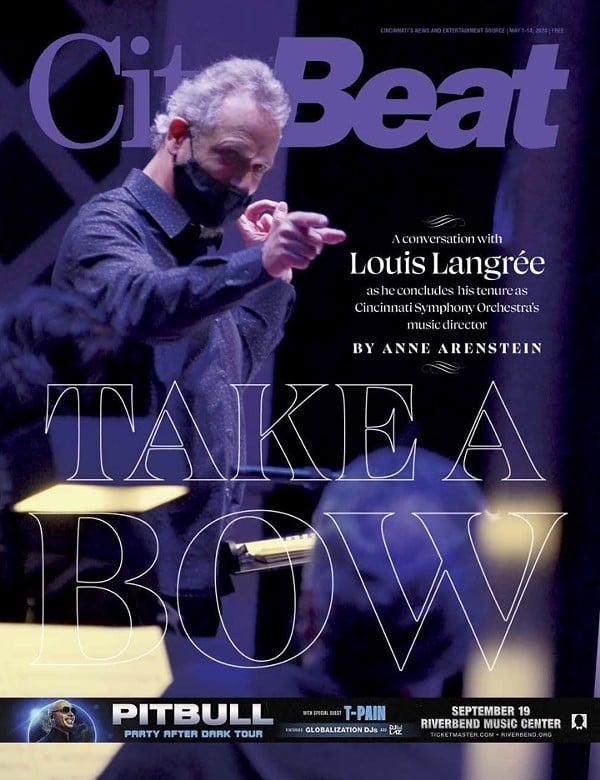|
Daveyon Robinson, a freshman at Withrow High School, recently faced trial by a jury of his peers. The prosecutor, defense attorney and, in fact, almost everyone in the courtroom were also his peers — fellow teenagers from area high schools.
Teen Court is a pilot program of the Hamilton County Juvenile Court that began in April, runs through this month and will continue next school year. The idea is simple: using kids to get through to other kids and speak to them in ways conventional courts can't.
Robinson faced the court because of a charge of disorderly conduct.
The Teen Court isn't set up to determine guilt or innocence. Defendants have to admit to the facts of an accusation before being allowed to go through the program, so Robinson was there to discuss what his sentence would be and why he did what he did.
"It was a comfortable environment because I was around all teens," he says.
He says that made him receptive to discussing his issues with anger and examining his motives. He was sentenced to writing on a paper bag.
"On the outside you write what people think about you, and on the inside you write what you feel about yourself," he explains.
Robinson returned to Teen Court the next week to present his project for review. At the end of the process, the hope is that the defendant sees the error of his ways. There's no permanent record of the proceedings, and the defendant is free to go.
Robinson says he'd like to return as a juror for someone else's trial.
'A lot of thought'
The program is a bit unorthodox and a lot less intimidating than juvenile court, but it's a still a legitimate court setting. If a defendant doesn't complete her sentence, she could face a trip back to the regular court. The Teen Court is designed to rehabilitate first-time offenders and offer them a hand up from their peers.
Triffon Callos, Teen Court program director, says 10 high schools — Anderson, Clark Montessori, Hughes Center, Moeller, Oak Hills, Princeton, SCPA (School for the Creative and Performing Arts), St. Bernard, Turpin and Walnut Hills — are involved in the program. Callos says he hopes to expand that roster next year.
It's something that Juvenile Court judges Thomas Lipps and Karla J. Grady had wanted to do for some time, Callos says. Similar programs are in place in more than 1,000 municipalities around the country. The recent launch came after months developing a manual and standards by which the court would operate.
"It's been a long, rewarding process," Callos says. "We're seeing really what a difference this program can make. ... We've had parents tell us this has opened the lines of communication in their family."
The defendants are all first-time minor misdemeanor offenders, and the court is catching them at a critical juncture, he says.
"At the end of the day we don't want these kids coming back through the system," Callos says. "A lot of them are good kids but they've made a mistake."
The program has proven popular, as well. Nearly 60 students applied to become court staff. Only 30 were selected.
"At first I thought it was a little corny but I actually think it does help people," says Emily Lippowitsch, a junior at Turpin High School.
Lippowitsch says she's acted as a juror and would like to work as a defense attorney in the program. Her aspiration ends there.
She hasn't any interest in the law as a profession; she wants to become a graphic or fashion designer. But being involved has broadened her horizons.
"I just wanted to try it out because I live in a suburb and I'm not exposed to many different people," she says.
Lippowitsch, one of the jurors who helped decide Robinson's fate, says the program really seemed to help him see himself through others' eyes.
"He actually put a lot of thought into it and seemed a lot better than when he came in the first time," Lippowitsch says. "The entire thing about restoring them to a community — I thought a bunch of teenagers really couldn't have that effect."
All about the exchange
Callos lists some of the ground rules of Teen Court. It doesn't take any felonies. Cases can include such misdemeanors as theft, alcohol or pot possession, trespassing and receiving stolen property. Students can't hear cases of students from their own schools. Also, participants must train using the program manual and agree to maintain high standards of personal ethics and display a professional demeanor.
The program manual is more than 30 pages long and includes a lengthy list of courtroom procedures, standards of appropriate dress, a contract in which participants state they will stay away from drugs and alcohol and an acknowledgement of the importance of maintaining the confidentiality of the cases they hear. Think of it as the debate club for over-achievers.
Judge Lipps says that the most important parts of the program aren't the procedures or the sentences. Though those are necessary, it's what goes on between the defendant and the court that's really why everyone is there. The rehabilitation of a defendant begins in that dialogue.
"The important thing is not the sentence," he says. "The important thing is the exchange. That is what will sustain and live on in the minds of the defendants."
Lipps says the value of that exchange is great. In the Teen Court officers, it fosters compassion and respect and helps them avoid objectifying people who have committed crimes or are writing them off.
"It makes you think, 'This is really a person who did this,' " Lipps says.
The Teen Court, as any court, Lipps says, must balance the protection of society against the accountability of the defendant.
"In reality, it is not that final decision (the sentence) that is important," he says. "It is the exchange that goes on before then. The real value is that the kid might understand what they've done." ©





